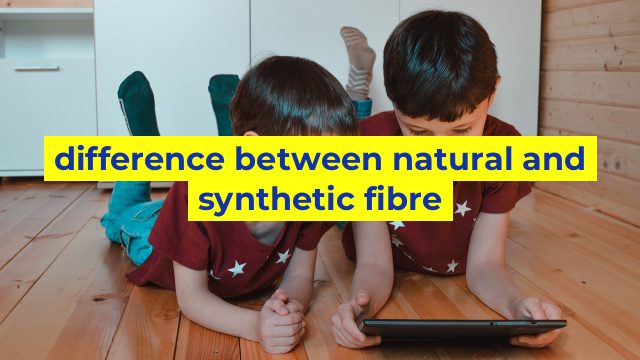The Difference Between Natural and Synthetic Fibers: Which One Should You Choose?
When you’re looking for clothing, bedding, or other fabrics, you may notice that some items are made from natural fibers and others from synthetic fibers. But what is the difference, and does it matter which one you choose? In this article, we’ll go over the basics of natural and synthetic fibers to help you make an informed decision.
Natural Fibers
Natural fibers are made from materials that are found in nature. Some examples of natural fibers include:
– Cotton: Made from the fibers of the cotton plant, cotton is soft, breathable, and absorbent. It’s commonly used for clothing, bedding, and towels.
– Wool: Made from the hair of sheep, wool is warm and insulating. It’s often used for sweaters, blankets, and coats.
– Silk: Made from the cocoons of silkworms, silk is soft, smooth, and shiny. It’s often used for clothing and bedding.
One of the benefits of natural fibers is that they’re biodegradable, meaning they break down naturally over time. They’re also renewable resources, as long as they’re harvested responsibly.
However, natural fibers can have some downsides. For one, they can be more expensive than synthetic fibers. They can also be less durable, as they can be prone to shrinking, stretching, or fading over time. Finally, some people may have allergies or sensitivities to certain natural fibers.
Synthetic Fibers
Synthetic fibers, on the other hand, are made from materials that are created in a lab. Some examples of synthetic fibers include:
– Polyester: Made from synthetic polymers, polyester is durable, wrinkle-resistant, and easy to care for. It’s often used for clothing, bedding, and athletic wear.
– Nylon: Made from synthetic polymers, nylon is lightweight, strong, and resistant to abrasion. It’s often used for hiking gear, swimwear, and lingerie.
– Rayon: Made from cellulose fibers, rayon is soft, breathable, and absorbent. It’s often used for clothing and bedding.
One of the benefits of synthetic fibers is that they’re often less expensive than natural fibers. They can also be more durable, as they’re less likely to shrink or fade over time. Finally, synthetic fibers can sometimes be more versatile, as they can be designed to have specific properties (such as moisture-wicking or UV protection).
However, synthetic fibers can have some downsides. For one, they’re not biodegradable and can take a long time to break down in landfills. They’re also made from non-renewable resources (such as petroleum), which can have environmental impacts. Finally, some people may find synthetic fibers less comfortable to wear or sleep on, as they can be less breathable than natural fibers.
Conclusion
So, which one should you choose? Ultimately, it comes down to your personal preferences, needs, and values. If you’re looking for a sustainable, natural option and don’t mind spending a bit more, natural fibers may be the way to go. If you’re looking for a durable, affordable option and don’t mind the environmental trade-offs, synthetic fibers may be a better choice. Ultimately, the best option is to choose fabrics that are high-quality, comfortable, and suitable for your intended use.
Table difference between natural and synthetic fibre
| Fibre Type | Natural Fibres | Synthetic Fibres |
|---|---|---|
| Definition | Fibres that are obtained naturally from plants, animals, or minerals. | Fibres that are manufactured through chemical processes using petrochemicals. |
| Examples | Cotton, wool, silk, jute, hemp, flax, sisal, cashmere | Polyester, nylon, acrylic, rayon, spandex, olefin, Kevlar |
| Source | Plants, animals, and minerals | Petrochemicals and other synthetic materials |
| Strength and Durability | Natural fibres are generally strong and durable. | Synthetic fibres are typically stronger and more durable than natural fibres. |
| Comfort and Aesthetics | Natural fibres often have a softer feel, better breathability, and a natural look. | Synthetic fibres may not be as comfortable to wear due to their plastic-like feel, lack of breathability, and unnatural appearance. |
| Maintenance | Natural fibres require careful handling to prevent damage and may need special cleaning methods. | Synthetic fibres are generally easier to care for and can often be machine-washed and dried. |
| Environmental Impact | Natural fibres are biodegradable and have a lower environmental impact than synthetic fibres. | Synthetic fibres are not biodegradable and may contribute to pollution and waste. |

